Why is the unity feedback system used?
This block diagram is for a 2 DOF ball balancing using a PID controller.
Why is the unity feedback system used?
This block diagram is for a 2 DOF ball balancing using a PID controller.
Unity feedback gives us a nice interpretable signal, which is the error \$e:= r-y\$. If you had something other than unity feedback you would not have just the error, i.e. with a feedback with gain 10 you would have \$ r-10y = e-9y\$.
Having a signal other than the error being fed into an integral controller would also means that your controller might not converge to having zero error (if it converges at all.) Say you have a plant $$ G(s):= \frac{1}{1+s} $$ and you use a feedback with gain 10 and an integral controller, then you would have $$ \frac{Y(s)}{R(s)} = \frac{\frac{G(s)}{s}}{1+10\frac{G(s)}{s}} = \frac{\frac{1}{s+1}}{s+10\frac{1}{s+1}} = \frac{1}{s^2+s+10} $$ which, by the final value theorem would mean that for a constant reference \$r\$ you would converge to \$y = r/10\$. While most people would want it to converge to \$y = r\$.
Also, if you manipulate a block diagram with some static feedback gain- some number \$k\$- you can always do the following. Transform the non-unity feedback

simulate this circuit – Schematic created using CircuitLab
into

which would have unity feedback.
Unity feedback systems are so often used for analysis because most (or all?) systems can be transformed into a unity-feedback system through block-diagram manipulations. The unity-feedback system therefore provides a convenient standard framework for understanding many feedback systems.
Unity feedback is a means for defining the required result with the same input.
This means unity gain overall but must require other feedback loops internally to achieve stability. (As you have shown) If the only feedback is position when the forcing function is tilt for acceleration, you automatically get a 2nd order effect (1/s^2) that must be compensated to look like a 1st order system at unity gain with phase margin.
PID simulates feedback for p,v,a with filters gain constants Ki,Kp,Kd except here you have a double integral table. So the need is more like Kp,Kd,Kdd (double derivative) to compensate for the double integral in the table.
Sensing target position with say a camera and differentiating twice to get v then a, acceleration means that high frequency system noise and surface roughness noise gets “amplified” twice so it is inherently noisy as a result and yet slow to correct errors, but it can be made stable for small angle tilts to say draw a square rolling the ball around the square platform.
If it were possible you would want an accelerometer feedback to match your forcing function to know when to brake by tilting backwards then go flat at v=0 with pes =0 (position error signal). Since that is not possible PID compensation must predict the motion to condition then PES with an internal loop.
Then the outer loop can be unity gain so you can compare target vs actual for error correction in the +- input.
Other info on servos
The goal is to design or synthesize a prediction model with feedback for each parameter of position, velocity and acceleration and maybe even jerk the 3rd order derivative of position changes.
E-cars
This is why in motor control systems, a command to accelerate or brake a motor, current is used as this senses torque which causes acceleration so is a 0 order proportional feedback and most stable. Then velocity can be a tach signal again 0 order. Then to control say automobile wheel positions cornering to optimize traction and wheel Differential slip a position encoder can provide this for optimum corner braking and car stability. These are now used and Infineon has a chip for hall sensor DSP automation for position and velocity feedback to the ECU called the Wheel Speed Sensor (WSS).